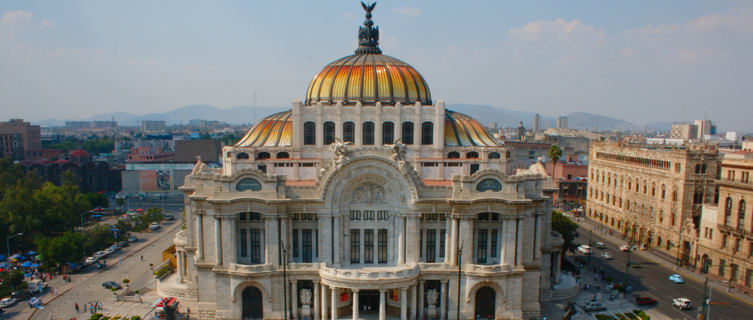
Mexico City travel guide
Sprawling, untamed and home to more than 20 million inhabitants, Mexico City is the very definition of a metropolis. The Mexican capital is one of Latin America’s most important economic and cultural cities, mixing colonial architecture, mansion-filled neighbourhoods and gritty, sometimes grim, urbanisation.
The city started as the seat of the mighty Aztecs, before Spanish conquistadores deceived and destroyed them in the 16th century. Very little of the original town remains, as huge cathedrals and other buildings were hurriedly constructed over the main temples. But excavations have revealed some of the Great Pyramid of Tenochtitlán, and any time a construction company digs up the ground for a new building, the ancient Aztec city rises to the surface.
Today, the capital is an uproarious mix of affluence and poverty, hip and hard-working. Enthusiastic artists and boisterous musicians operate in and around the fashionable, tree-lined districts of La Condesa and Colonia. Here you’ll find a lively café culture and trendy nightlife amidst beautiful colonial-era architecture.
In the south are several gated, super-rich neighbourhoods, but also the youthful University City and Frida Kahlo’s former home. Many parts of the north and east are poorer and a bit less safe, but there are sites of cultural significance dotted all over the city.
Mexican cuisine is known across the world and with good reason. But nowhere does Mexican food quite like Mexico City, where culinary traditions from across the country are brought together. Excellent food can be found everywhere, from ubiquitous street stalls to the many hole-in-the-wall eateries and more up-market restaurants. International fare is also popular among the city’s steadily growing middle class, particularly Western European and Japanese cuisine.
Despite its seemingly endless urban spread, Mexico City is also home to vast swathes of parkland. The expansive Bosque de Chapultepec is one of the largest city parks in the world, while Desierto de los Leones is a forested wilderness on the city’s south-western fringe.
Brightly painted, open-topped trajineras (barges) trawl Mexico City's mysterious ancient canal system in Xochimilco; all that remains of the lake that the original Aztec city was built around for defence. It’s an essential slice of the city’s rich past that’s all but lost forever after the conquest. The Spaniards quickly drained it and today the thirst of the city’s 20 million inhabitants continues to reduce water levels by draining aquifers, which in turn means the city is slowly sinking.
Do you have any Feedback about this page?
© 2026 Columbus Travel Media Ltd. All rights reserved. No part of this site may be reproduced without our written permission, click here for information on Columbus Content Solutions.











 You know where
You know where